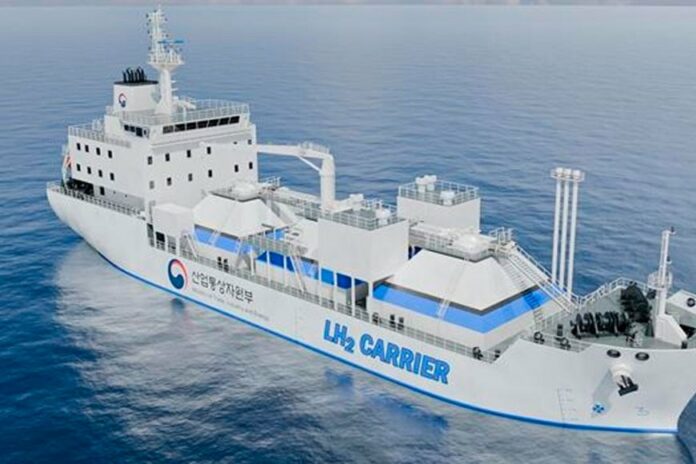On the 9th, the Ministry of Trade, Industry and Energy formed a joint public-private promotion team for liquefied hydrogen carriers and held a launching ceremony at BEXCO, Busan.
Liquefied hydrogen carriers are considered future ship items that will succeed liquefied natural gas (LNG) ships, which Korea has a technological advantage. The technical difficulty is very high and the added value is also great.
The International Energy Agency (IEA) predicts that by 2050, there will be more than 200 liquefied hydrogen carriers. This is based on the prediction that 500 million tons (t) of hydrogen will be produced and used worldwide by 2050.
Noh Gil-tae, a senior researcher at the Korea Register of Shipping (KR), said, “Liquid hydrogen carriers are expected to be used as a long-term means of transporting hydrogen after 2030 given that cryogenic cargo ship technology or equipment is still under development and large-scale liquefaction plants are needed at the production site.”
As the market for liquefied hydrogen carriers is expected to grow, major countries have also jumped into the development of carriers. Representatively, Kawasaki Heavy Industries, Japan, built the world’s first liquefied hydrogen carrier, Suiso Frontier, and transported liquefied hydrogen from Australia.
The Ministry of Industry also announced a strategy to lead the super gap of liquefied hydrogen carriers last year and began developing carriers in earnest. At that time, three strategies were put forward: securing core materials, parts, and equipment source technologies, demonstration and enlargement, and establishing a public-private cooperation system. The Ministry of Industry plans to provide a total of 55.5 billion won this year and build the world’s largest demonstration ship by 2027.
To this end, the government launched a promotion team consisting of top experts in domestic liquefied hydrogen carriers, including the three shipbuilding companies, universities, and researchers. The Ministry of Industry plans to create a cooperative ecosystem such as linkage and cooperation between R&D tasks, cooperation in building demonstration ships, and establishing a supply chain for liquefied hydrogen equipment. Currently, 43 R&D projects involving 101 organizations are underway at the same time in the development of liquefied hydrogen carriers. As such, the role of governance that can organically link and cooperate with tasks is important.
An official from the Ministry of Industry said, “Liquid hydrogen carriers are an area with high technology difficulty and very high risk of early technology development, and the government’s role as a pick-up water for K-Chosun’s new food preoccupation is important. We will reorganize related laws and systems so that the technology we have developed can become a global standard and actively support to secure technology for large-scale liquefied hydrogen carriers early.”
Source: mk.co.kr



